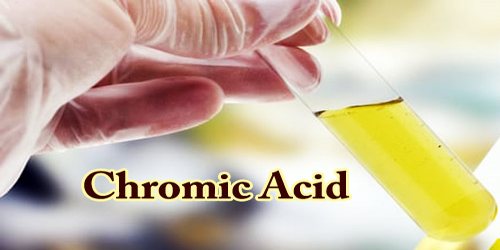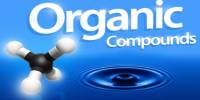Chromic acid is a chromium oxoacid, and it is also called ‘Tetraoxochromic acid’ or ‘Chromic(VI) acid’. It is usually used for a mixture made by adding concentrated sulfuric acid to a dichromate, which may contain a variety of compounds, including solid chromium trioxide. This kind of chromic acid may be used as a cleaning mixture for glass. Chromic acid is a strong acid that can be prepared in a few steps. There are more steps involved in the proper disposal of chromic acid.
Chromic acid (H2 Cr2 O7 (aq)) is a strong acid because hydrogen ions disassociate and stay in solution. This is why (aq), meaning “aqueous”, is written after its formula. Chromic acid may also refer to the molecular species, H2CrO4 of which the trioxide is the anhydride. Chromic acid features chromium in an oxidation state of +6 (or VI). It is a strong and corrosive oxidizing agent.
Molecular chromic acid – H2CrO4 is similar to sulfuric acid (H2SO4) as both are strong acids, however, only the first proton is lost easily. Dichromic acid – H2Cr2O7 is the fully protonated form of the dichromate (Cr2O7–) ion. Also, it is seen as the product of adding chromium trioxide (CrO3) to molecular chromic acid.
Because chromic acid is toxic, it is not recommended to make large batches of it that have to be stored for extended periods of time. The amount of reagents (chemicals involved in the reactions) can be modified based on the needs of the scientist. Before working with any reagent, it is important to wear appropriate safety equipment, such as chemical-resistant goggles, gloves, and lab coat. The room where the reagents are being prepared should also be ventilated and preferably done in a fume hood.
The first step in preparing a chromic acid solution is to obtain a clean liter flask or beaker and fill it with 20 grams of sodium dichromate (Na2 Cr2 O7) or potassium dichromate (K2 Cr2 O7).
Next, add a small amount of water to the flask or beaker and stir with a glass stirring rod to make a paste. While continuously stirring, carefully pour 300 milliliters of concentrated sulfuric acid (H2 SO4 (aq)) to the graduated cylinder or beaker.
Finally, pour the chromic acid into a glass storage container with a stopper. Be sure to put a label on the glass storage container indicating it contains concentrated chromic acid and the date it was made. After the chromic acid has served its purpose or it has been in storage for a specific amount of time, it can be disposed of.
Chromic acid is an intermediate in chromium plating and is also used in ceramic glazes, and colored glass. Because a solution of chromic acid in sulfuric acid (also known as a sulfochromic mixture or chromosulfuric acid) is a powerful oxidizing agent, it can be used to clean laboratory glassware, particularly of otherwise insoluble organic residues. This application has declined due to environmental concerns.
Furthermore, the acid leaves trace amounts of paramagnetic chromic ions Cr(III) that can interfere with certain applications, such as NMR spectroscopy. This is especially the case for NMR tubes.
Chromic acid (H2CrO4) acts as an intermediate in chromium plating, It is used in ceramic glazes, colored glass. Chromosulfuric acid or Sulfochromic mixture is a strong oxidizing agent that is used to clean laboratory glassware. It has the ability to brighten raw brass and therefore it is used in the instrument repair industry. In the year 1940, it was used in hair dye.
This important acid (Chromic acid) is known also as ‘chromium trioxide’. The technical grade is obtainable from primary producers in an anhydrous form as small dark red flakes containing 99% CrO3. Like all chromates and dichromates, its chromium is in the hexavalent state.
Chromic acids are strong oxidizers and can react violently if mixed with some easily oxidizable organic substances which can cause explosions or fires. In case of any burns caused by this acid, it is treated with a dilute solution of sodium thiosulfate. A powerful irritant of skin, eyes, & mucous membranes. Can cause dermatitis, bronchoasthma, “chrome holes”, damage to the eyes. Chromic acid must be diluted in a good amount of water first. Then, it can be neutralized with a reductant after the dilution process. Some excellent neutralizing agents are sodium/potassium metabisulfite, sodium thiosulfate, or sodium sulfite.
Information Sources:
















